This article was medically reviewed by Janice Litza, MD. Dr. Litza is a board certified Family Medicine Physician in Wisconsin. She is a practicing Physician and taught as a Clinical Professor for 13 years, after receiving her MD from the University of Wisconsin-Madison School of Medicine and Public Health in 1998.
There are 19 references cited in this article, which can be found at the bottom of the page.
This article has been viewed 87,038 times.
Sinusitis is an inflammation of paranasal sinuses most commonly due to an infection, underlying allergy or various autoimmune processes. The sinuses are small cavities in the skull that are normally filled with air. Sinusitis is an inflammation of the tissue that lines these cavities. In some cases, the swelling of this tissue blocks off the entry of the sinuses, trapping mucus and air inside them. This can cause pain in the cheeks, runny nose, and headache over the forehead region; sometimes, it may lead to a secondary bacterial infection.[1] Acute sinusitis resolves in 4 weeks whereas chronic sinusitis goes beyond 12 weeks and may keep on recurring for years. However, in most cases, sinusitis can be easily treated – even without antibiotics.[2]
Steps
Trying Non-Antibiotic Medications
-
1Use a saline spray as needed throughout the day. A saline nasal spray is a gentle way to flush out your sinuses and get some relief. You can purchase a saline nasal spray over-the-counter. Use it several times during the day as needed to relieve your congestion.[3]
-
2Try a corticosteroid nasal spray. Corticosteroid nasal sprays are more powerful than saline sprays because they contain medicine that will reduce swelling in your sinuses and this will help to relieve sinus pressure. Follow the manufacturer’s instructions for using this type of nasal spray.[4]Advertisement
-
3Take an over-the-counter decongestant medication. Over-the-counter decongestants may also help to give you some relief by causing your sinuses to drain more quickly. Follow the manufacturer’s instructions for taking any of these types of medications.[5]
- You can find these medications in the form of tablets, liquid medication, and nasal sprays.
- Some medications you might try include pseudoephedrine (Sudafed), guaifenesin (Mucinex), and Afrin (oxymetazoline).[6]
-
4Treat pain with an over-the-counter pain reliever. If you are dealing with pain from a sinus infection, then you may also want to take an over-the-counter pain reliever, such as ibuprofen or acetaminophen. Take the medication as indicated on the package.[7]
Using Verified Home Remedies
-
1Flush your sinuses. Nasal irrigation with salt water can help in clearing the mucus and keeping your sinuses moist. There are different ways of doing this, ranging from bulb syringes and Neti Pots to pricey irrigation systems. Regardless of your preferred method, it is necessary to wash the irrigation device after each use and leave it open to air dry. You can flush your sinuses daily and you may do it twice a day when you have an active infection.[8]
- To use a Neti Pot:[9]
- Dissolve 1 teaspoon (4.9 mL) of sea salt or pickling salt (dissolves faster) in 2 cups of warm water. The salt will help dissolve the mucus that is blocking the communicating path between the sinus and the nasal cavity. Don’t add any more salt than this or it may cause a burning sensation.
- Standing over a sink, fill the Neti Pot with one cup of water and place the tip of the spout into one nostril.
- Tilt your head to the side and allow the water to run out through the opposite nostril. Be careful not to tilt your head back and up or the water will reroute down your throat.
- Refill the Neti Pot and repeat with the other nostril. Repeat 2 times each day. However, remember not to use this remedy for more than 2 weeks, as you can damage your nasal mucosa.
- To use a Neti Pot:[9]
-
2Breathe in steam vapors. Some people find that inhaling steam can be very soothing in the management of acute sinusitis. One way to use steam treatment is to fill a bowl with steamy hot water. Then lean over the bowl in a comfortable position and drape a towel over the bowl and your head to keep the steam in. Relax and breathe in the steam for about ten minutes at a time. You can repeat this several times a day. Be careful not to scald your face by touching the water.[10]
- You can even run the shower and sit in the bathroom and breathe deeply. The steam vapors will help in reducing the congestion and swelling of the nasal passages.
-
3Apply heat to the area. Place a warm, wet towel on your face to help in relieving some of the heaviness from your sinuses. If the area is heated, blood flow will increase, and the fluid inside the sinus cavity can be more easily drained.
- Tiger warmer is one of the most commonly used remedies for sinus problems in Chinese medicine. The tiger warmer is a device used for heating an affected area. Use this Chinese device as often as you wish to help get rid of your sinus problems.
-
4Use dried or fresh oregano. The primary benefits of oregano are due to its carvacrol and rosmarinic acid content. Both compounds are natural decongestants and histamine reducers that can have direct, positive benefits on the respiratory tract and nasal passage airflow. Oregano can be used for cooking in dried as well as fresh form. A few drops of oregano oil in milk and juice can be taken each day for health benefits, too.
- The volatile oils in oregano, namely Thymol and carvacrol, have shown to inhibit growth of bacteria like staphylococcus aureus and pseudomonas aeruginosa.[11] These two types of bacteria are common culprits when it comes to sinus infections.
-
5Try eucalyptus. The antiseptic properties of eucalyptus can help shrink the swollen tissues lining your nasal passages and sinuses. Eucalyptus is a common ingredient in cough lozenges and syrups and its effectiveness is due to a compound called cineole. You can also pour a few drops of oil in hot water and inhale the steam for relief from your sinus infection.
- Cineole has numerous health benefits – it’s an expectorant, can ease a cough, fights congestion, and soothes irritated sinus passages. Eucalyptus oil has anti-inflammatory, anti-viral and anti-bacterial properties.[12] Eucalyptus oil vapor acts as a decongestant when it is inhaled and hence, can be used in treatment of sinusitis as well. Add a few drops to hot water for a steam treatment.
-
6Take grapefruit seed extract. The grapefruit seed extract is a powerful antibiotic and is used to inhibit microbes, parasites, bacteria and viruses.[13] It is also a very good anti-fungal and hence can be used in sinusitis that can be of any origin. Grapefruit seed extract is available in pill, powder and liquid form.[14]
- The recommended dose of grapefruit seed extract for general health promoting purposes is 10 to 20 drops of liquid or 200 mg of powder or pills, three times daily. There are no serious adverse side effects reported from grapefruit seed extract, however it may interact with certain medications such as statin (blood thinning) drugs, so talk to your doctor before taking it.
-
7Eat more thyme. Thyme produces thymol, the powerful antiseptic oil which is classified as naturally antibiotic and anti-fungal.[11] Thyme tea has the power to chase away and eliminate bacteria and viruses so whether your infection is based on either, it may work.
- To help fight infection in your nose, sinuses and lungs, inhale thyme vapors. Bring a pot of water to a vigorous boil, then turn off the burner. Place a few drops of thyme oil in pot of steaming water, and wait for 5-10 minutes, or until the steam isn’t too hot. Cover your head with a towel, and inhale the vapors. However, be careful not to expose your skin to steam that is too hot.
-
8Add more turmeric to your dishes. Thanks to a powerful compound found in turmeric known as curcumin, turmeric can heal the sinus cavity and clear the airways. Its ability to treat sinus infections is just one of its many benefits. Turmeric possesses anti-inflammatory properties, making it a great natural cure for sinus infection.[15]
- Add a dash of turmeric to add some zest to your savory dishes. What's more, you can gargle it, too. Just a dash in a cup of hot water, stirred and dissolved, will do the trick.
-
9Eat more horseradish. Horseradish contains volatile oils, notably mustard, which have anti-bacterial properties due to the presence of allyl isothiocyanate.[16] Because of this, it can be used in cases of sinusitis caused by bacterial infection. Add it to your favorite dishes or use it as a dip to reap its benefits.
- Horseradish encourages your body to get rid of mucus. One way a sinus infection starts is with the accumulation of thick mucus in the sinuses, which lays out the welcome mat for bacteria. Stagnant mucus is the perfect breeding ground for bacteria to multiply and cause a painful infection. Horseradish can help thin and move out older, thicker mucus accumulations; thin, watery mucus is easier to eliminate.
-
10Avoid smoking, alcohol, and other stressors. Smoking, alcohol, and stress all can wreak havoc on your sinuses. Alcohol consumption can cause swelling of nasal and sinus membranes thereby resulting in sinus infection, smog can cause irritation in the sinus lining, which in turn results in poor drainage of mucus, and chronic stress affects your immune system opening the door for bad habits to lead to infections in your upper respiratory system. To stay healthy, cut them all out of your lifestyle.
- To quit drinking and quit smoking, take it one step at a time. You don't want to tackle all of life's issues on top of going cold turkey. Baby steps will make it easier to quit and easier to stay on track.
- When it comes to fighting stress, consider yoga, meditation, and deep breathing exercises. Just 15 minutes a day spent slowing down can work wonders on the rest of your entire day.
Using Unverified Home Remedies
-
1Make your bedroom easy to sleep in. Sinus infections are bad, but sleeping with a sinus infection is even worse. Here's a few things you can do to make the nights easier:
- Keep your room moistened as it helps to drain sinuses. Use a humidifier if need be.
- Attach electrostatic filters to your air conditioning and heating equipment to eliminate allergens in the air.
- Avoid extreme temperatures. While extreme dampness can make room for bacteria to thrive, a dry environment will trigger a prolonged sinus irritation.
- Prop up your head while you sleep. Since mucus accumulates in the sinuses while the head is down at night, it is best to have your head propped up.
-
2Do yoga. Practically speaking, several poses are invaluable for relieving sinus pressure – namely, standing poses:
- Sarvangasana (shoulder stand) and Ardha Halasana (Supported Half Plow Pose) are done on several rolled mats arranged from the shoulders to the elbows. These two poses should be held for some time to receive the full benefits. The sinuses may remain blocked at first; but after some time in the poses, as you relax, the sinuses usually open up, bringing relief.
- Eka Pada Sarvangasana (Plow Pose with one leg up and one down) is also particularly good. The inversions act as a natural flushing mechanism for the blocked sinuses. The blood circulates with tremendous force into the stagnated areas, clearing away the secretions to clear the passageways and restore free breathing.
- Other asanas like Child’s Pose (Balasana), Downward Facing Dog (Adho Mukha Svanasana) Standing Forward Fold (Uttanasana) and Rabbit Pose (Sasangasana) are also helpful in sinusitis. Practice Headstands only after the disorder is alleviated. At that point, regular practice of inversions helps keep the sinuses and respiratory tract healthy.
-
3Try apple cider vinegar. Apple cider vinegar is thought to thin and eliminate mucus, making it easier for your body to get rid of. It possesses antimicrobial properties, which aid in killing bacteria.
- At the first sign of infection combine 1-2 teaspoons of raw, unfiltered apple cider vinegar in 6 ounces of water, a teaspoon of raw honey or Stevia to sweeten and drink 3 times a day for 5 days.
-
4Get more peppermint. Peppermint, and peppermint oil, contains menthol – a soothing ingredient thought to relax the smooth muscles of the respiratory tract and promote free breathing. Many people use therapeutic chest balms and other inhalants that contain menthol to help break up congestion. Take a few drops of peppermint oil and olive oil. Mix them well and apply over the affected areas. Massage the oil in gently to alleviate your pain.
- Menthol also acts as an expectorant providing temporary quick relief from nasal congestion and sinus pain. Peppermint is believed to have anti-bacterial, anti-viral and anti-inflammatory properties that purportedly make it so effective.
- Keep in mind that ingesting peppermint oil can worsen acid reflux, so use caution or try something else if you have this condition.
-
5Add cayenne pepper to your dishes. Cayenne pepper is thought to break and flush the mucus out of your sinus cavities. It has capsaicin, a stimulant that promotes proper functioning of nasal passages. Dab a few pinches of this pepper powder in the affected nostril to reap its benefits. It's best to apply it before going to bed to make sleep easier to come by.
- You can add it to your food, too, if your stomach and sinuses can tolerate spicy foods. However, it's more effective if it's directly in your nostrils.
-
6Eat more onion. The anti-fungal and anti-bacterial properties of onion can aid in treating sinus infection as they put up a fight against bacteria and parasites. There are two ways to utilize its power:
- Cut an onion into medium sized pieces and put them in a bowl. Inhale the smell from the onion until your eyes start watering and your nose starts running. This helps to flush out the mucus thereby relieving you of the infection.
- Chop some onion to be boiled. Once boiling, take it off the stove. Let it cool down a bit and then inhale the vapor for a few minutes. You'll notice mucus starting to come out from your inner nostrils.
-
7Smell the garlic. The anti-viral and anti-fungal properties of garlic can help in treating sinusitis. Certain active components in garlic give it its pungent smell, which is particularly effective. Inhaling the odor may help to fight bacteria and fungi, which can cause sinus infections. Scordinin, a compound in garlic, is believed to enhance your body's immune power, which helps to keep infections in check.
- Crush three cloves of garlic and add them to boiled water. Inhale the steam until you start feeling relief. The steam opens blocked sinuses and drains mucus. Do it twice or thrice a day for quicker results.
-
8Drink ginger water. Gingerol, an active component of ginger, is thought to help treat sinus infections. It acts as a decongestant and by warming up the nasal passage it can clear your blocked sinuses. Ginger tea is a good substitute if you don't have the raw variety on hand.
- Crush an inch of ginger and add it to a cup of water. Keep the flame low and allow it to boil until the water size reduces by half. Filter it, add half spoon of honey to it and drink it for relief. You can have it twice a day until you are relieved of the condition.
Changing Your Diet
-
1Eat more probiotics. Probiotics are substances which can keep harmful bacteria under control.[17] Probiotics are found in foods like pickles, yogurt, unpasteurized miso, and kimchi. Include these foods in your diet to help get the infection causing bacteria under control.
- Pickles can be eaten as a side dish with a steak, for example. They're a very convenient food to pop in as a snack when you're on the go, too.
- Eating a cup of fruit with a serving of whole grains, such as granola or oatmeal, in the morning can make a great nutritious breakfast and will provide you the necessary amount of probiotics to fight off future infections.
-
2Get more vitamin D. Vitamin D is a great immune system booster. It stimulates the body into having a faster response to pathogens such as the bacteria causing your sinus infection. The best way in which you can get a fair amount of vitamin D is through sun exposure. A walk outside on a sunny day will do the trick.
- Vitamin D isn't really found in food. You can take a supplement, but you may wish to talk to your doctor before doing so. Supplements aren't appropriate for everyone.
-
3Up your intake of antioxidants, including vitamin C. Antioxidants reduce cell deterioration by neutralizing free radicals. If the cells suffer less damage, the body can fight infection a lot easier. Berries (all kinds), beans, kiwi, acai, apples, and pecans are all great sources of antioxidants.[18]
- A great antioxidant is vitamin C. It's found in a lot of foods, like citrus fruits, lemons and peppers. It’s easy to incorporate these foods in your diet, too. You can use the juice from a lemon by adding it to your salad, for example, or add a bit of pepper to your soups, stews, or even sandwiches.
-
4Eat your vegetables. Foods that are sources of vitamin A strengthen the immune system and prevent the onset of respiratory disorders. The best sources of vitamin A are generally found in vegetables, which are good for the rest of your health, too. The best vegetables for sinusitis include:[19]
- Green leafy vegetables
- Carrots
- Beets
- Spinach
-
5Start an elimination diet. Some people may have a food allergy or food sensitivity that causes excess mucus production, or might even compromise their immune function, leaving them more susceptible to infectious agents. Could this be you? If you're unsure, an elimination diet is a good way to test yourself for food sensitivities.
- With this method, you deliberately eliminate specific foods to see if your health improves when you don't eat those foods. After a specific period of avoidance (typically 7-14 days), you reintroduce the suspected food into your diet and see what symptoms, if any, you experience. If your sinusitis is an effect of allergy, you should be able to identify the allergen in this manner and get rid of it forever.
Understanding Your Condition
-
1Learn the symptoms of a sinus infection. It's important to be able to recognize a sinus infection versus other respiratory ailments. You likely have a sinus infection if you see the following symptoms:
- Facial pain. When the sinuses become infected, their inner lining will start to swell and become inflamed. This will exercise pressure on the surrounding tissues, causing pain.
- Nasal discharge. A discolored or thick inflammatory fluid may leak from your nose. The sinus has a communication path with the nasal cavity, so any fluid that is building up inside the sinus will drain itself through the nose.
- Nasal stuffiness. Excess fluid from the sinuses draining through your nose will block the airways, causing stuffiness and difficulty in breathing.
- Loss of smell. Because the airways are blocked with inflammatory fluid, fragrance molecules cannot reach the olfactory cells (specially designed cells, which send information regarding smell to the brain). This situation causes loss of smell.
-
2Know the possible causes of your sinus infection, too. If you know what caused this ailment, you may be able to avoid it in the future. Here are the common causes of sinusitis:[20]
- Viruses. The beginning of a sinus infection can be as common as a cold. A cold is usually caused by a virus, so an antibiotic treatment will have no effect. When suffering from a virus induced cold, the nasal tissue will swell due to inflammation and the communication between the sinus and the airways will be stopped. The sinus will be sealed, and mucus will start to build up inside. This is a great environment for viruses to multiply and cause an infection.
- Allergies. An allergic reaction causes inflammation of the airways. When the nasal tissue becomes inflamed, sinus draining will be ceased, and mucus will accumulate inside the sinus, creating a great environment for infection.
- Bacteria. Bacteria are another cause for infection. Studies show that bacteria rarely start a sinus infection, but they can complicate an existing condition or create any secondary infections.
- Polyps. Polyps are benign growths that develop from sinus or nose tissue. They can block the sinuses and prevent proper drainage.
- Fungi. One of the most common causes for sinus infection is fungi. This type of infection is common amongst people with a weak immune system. If your body’s defense mechanism is crippled, fungi can easily grow. The sinuses are perfect environments where fungi can thrive.
- Anatomy. Having an abnormal airway passage can block the sinus openings, preventing proper mucus drainage. The mucus in the sinuses can then become contaminated with a bacterium or virus. The most common abnormality associated with a sinus infection and sinusitis is a deviated septum (the center section of your nose is shifted to either the left or the right side).
-
3Know your medical options, too. In case your sinus infection doesn't go away naturally, you may wish to turn to an antibiotic medication. Antibiotic treatment is necessary when a sinus infection is caused by a bacterium. One of the most common antibiotics used for treating bacterial sinus infections is amoxicillin. A dose consisting of 250 to 500 milligrams should be taken 3 times a day (once every 8 hours), for about a week or a week and a half. Your doctor may also prescribe a larger dose, such as 500 to 875 milligrams taken 2 times a day (once every 12 hours), for the same time period.
References
- ↑ https://my.clevelandclinic.org/health/diseases/17701-sinusitis
- ↑ https://my.clevelandclinic.org/health/diseases/15285-acute-sinusitis.
- ↑ https://www.health.harvard.edu/diseases-and-conditions/what_to_do_about_sinusitis
- ↑ https://www.nhs.uk/conditions/steroid-nasal-sprays/
- ↑ https://www.cdc.gov/antibiotic-use/sinus-infection.html
- ↑ https://www.drugs.com/condition/nasal-congestion.html
- ↑ https://myhealth.alberta.ca/Health/Pages/conditions.aspx?hwid=hw67214
- ↑ https://www.fda.gov/consumers/consumer-updates/rinsing-your-sinuses-neti-pots-safe
- ↑ https://www.youtube.com/watch?v=_TfRxcI7aMc
- ↑ https://www.aafa.org/sinusitis-sinus-infection/
- ↑ 11.011.1Fratini F, Casella S, Leonardi M, Pisseri F, Ebani VV, Pistelli L. Antibacterial activity of essential oils, their blends and mixtures of their main constituents against some strains supporting livestocks mastitis. Fitoterapia. 2014 Apr 13;96C:1-7. doi: 10.1016/j.fitote.2014.04.003. [Epub ahead of print].
- ↑ Ellaissi A, Rouis Z, Salem NA, Mabrouk S, ben Salem Y, Salah KB, Aouni M, Farhat F, Chemli R, Harzallah-Shikri F, Khouja ML. Chemical composition of 8 eucalyptus species’ essential oils and the evaluation of their anti-bacterial, anti-fungal, anti-viral activities. BMC Complement Altern Med. 2012 Jun 28;12:81. doi:10.1186/1472-6682-12-81.
- ↑ Spinosi V, Semprini P, Langella V, Scortichini G, Calvarese S. Presence of chemical additives and microbial inhibition capacity in grapefruit seed extract used in apiculture. Vet Ital. 2007 Jan-Mar;43(1):109-13. English, Italian.
- ↑ Krajewska-Kułak E, Lukaszuk C, Niczyporuk W. [Effects of 33% grapefruit extract on the growth of yeast-like fungi, dermatophytes and moulds]. Wiad Parazytol. 2001;47(4):845-9. Polish.
- ↑ Jurenka JS. Anti-inflammatory properties of curcumin, a major constituent of Curcuma longa: a review of preclinical and clinical research. Altern Med Rev. 2009 Jun;14(2):141-53
- ↑ Park HW, Choi KD, Shin IS. Antimicrobial activity of isothiocyanates (ITCs) Extracted from horseradish (Armoracia rusticana) root against oral microorganisms. Biocontrol Sci. 2013;18(3):163-8.
- ↑ http://www.nhs.uk/Conditions/Sinusitis/Pages/Treatment.aspx
- ↑ http://www.webmd.com/food-recipes/20-common-foods-most-antioxidants
- ↑ http://www.mayoclinic.org/diseases-conditions/chronic-sinusitis/basics/definition/con-20022039
- ↑ http://www.health.harvard.edu/newsletters/Harvard_Womens_Health_Watch/2009/March/What_to_do_about_sinusitis
About This Article
To get rid of a sinus infection without antibiotics, place a warm, wet towel on your face to break up some of the mucus. You can also inhale steam by filling a bowl with boiling water and leaning over it with a towel draped over your head. Alternatively, close the doors and windows in your bathroom and run a hot shower while you breathe deeply. Additionally, prop your head up while you sleep and use a humidifier in your bedroom to help drain your sinuses. For more information from our Medical co-author, including how to use turmeric to get rid of sinus infections, keep reading!
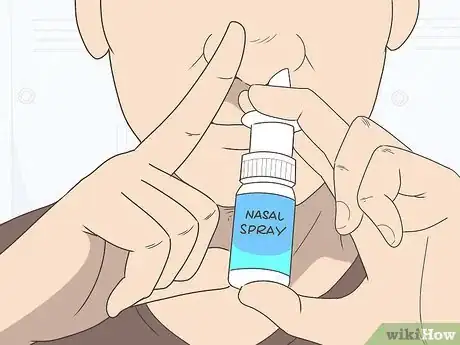
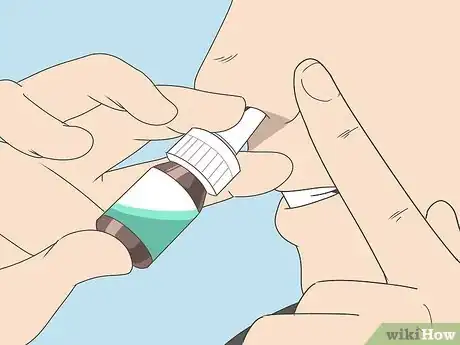
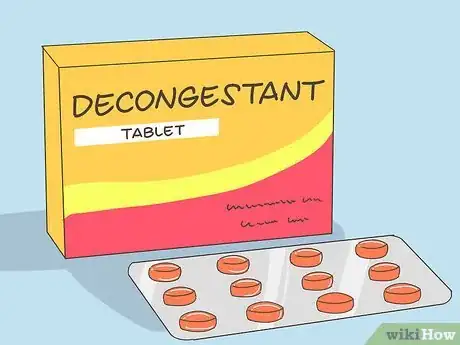




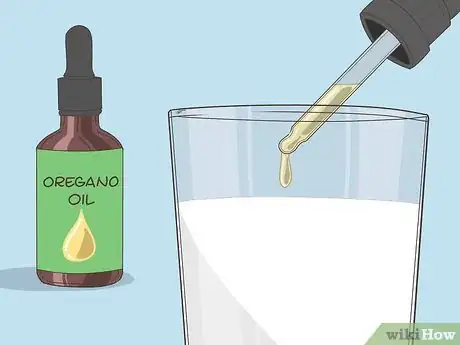
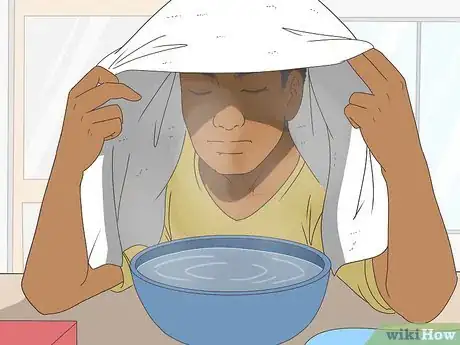
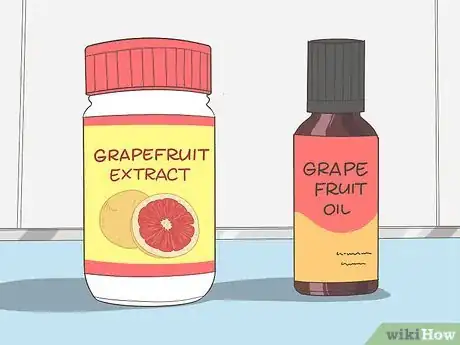
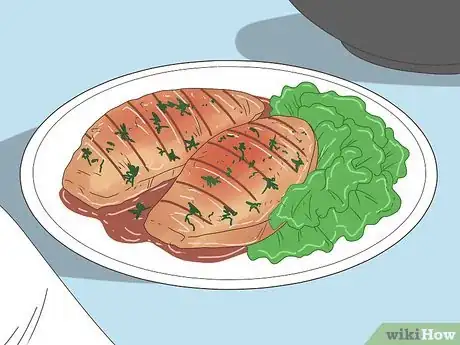
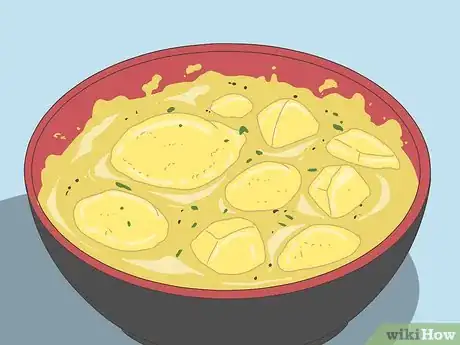
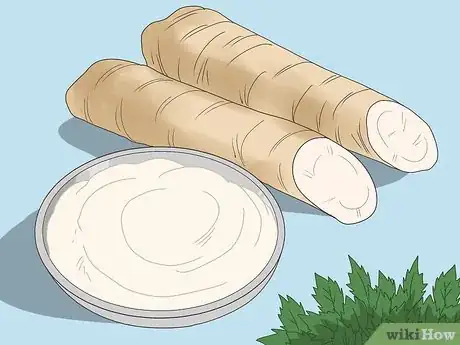



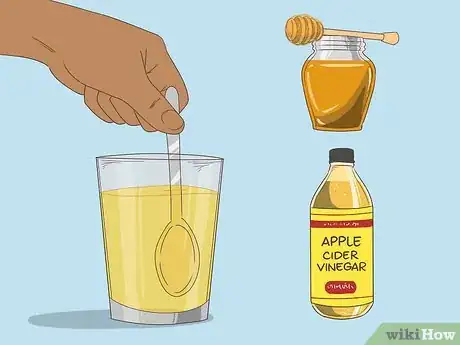
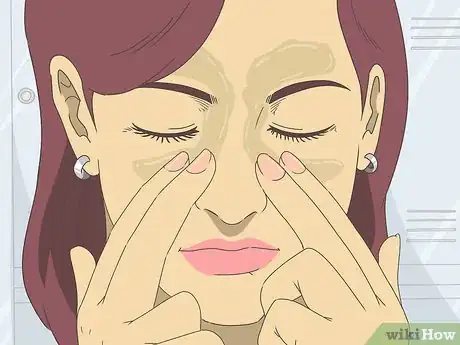

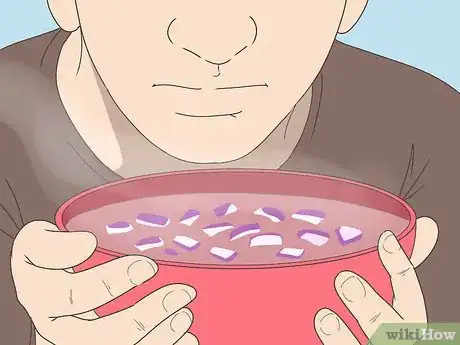
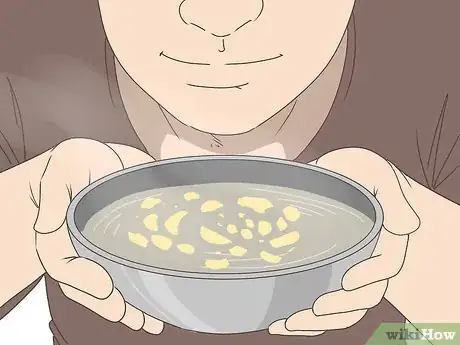
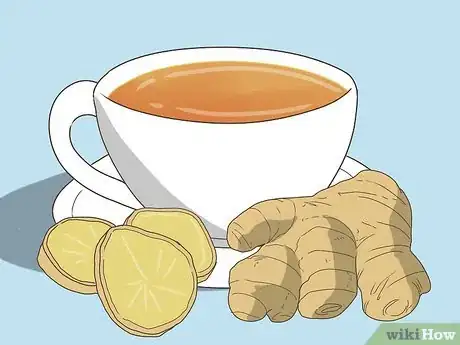
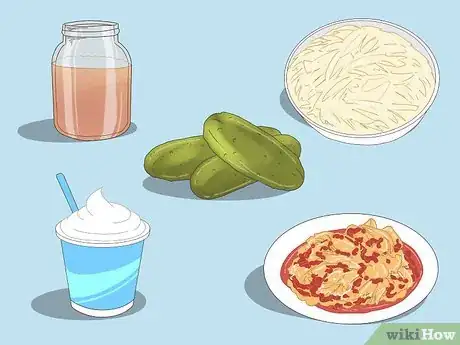
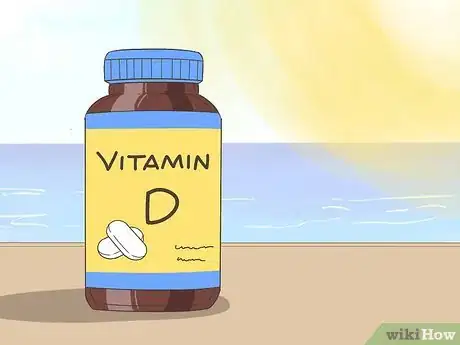

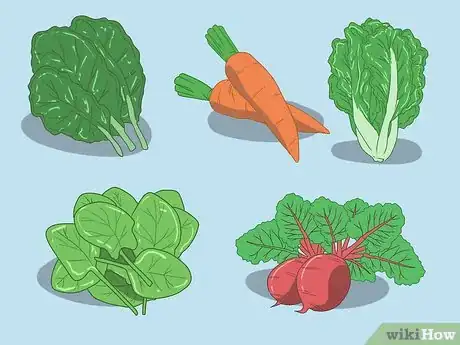
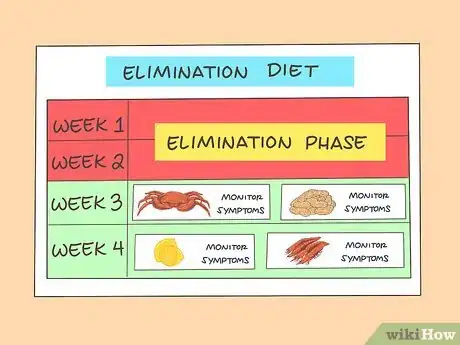
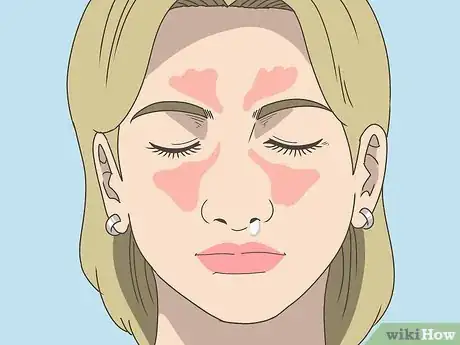
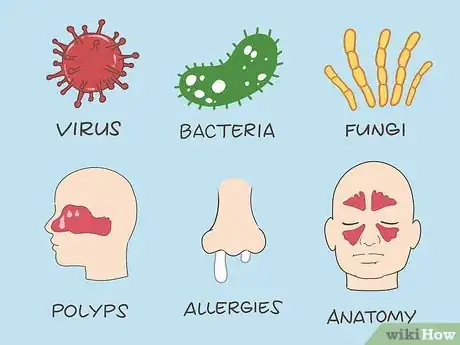
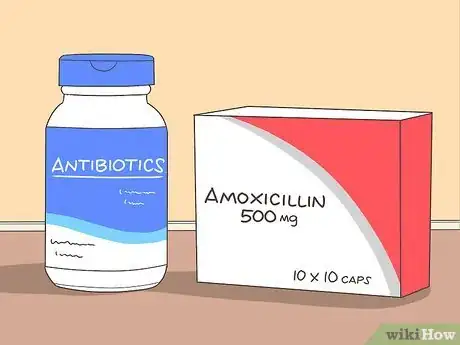

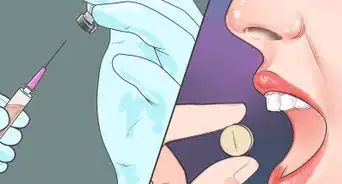

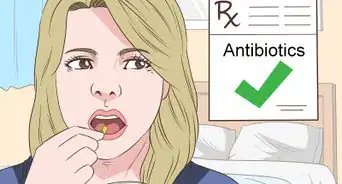
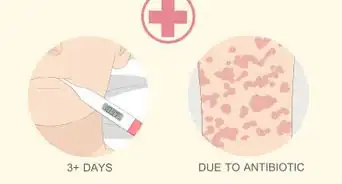





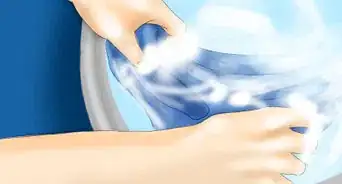
-Step-11.webp)

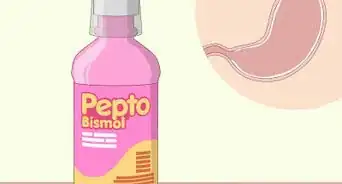
















































Medical Disclaimer
The content of this article is not intended to be a substitute for professional medical advice, examination, diagnosis, or treatment. You should always contact your doctor or other qualified healthcare professional before starting, changing, or stopping any kind of health treatment.
Read More...